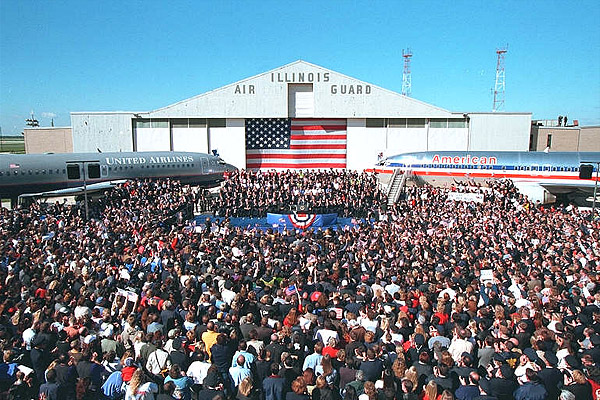Suggestions for Reducing
Security Related Threats
After the massive death and destruction in the wake of the hijack related events in New York and Washington, there have been many suggestions made for making it harder for hijackers to take over an aircraft and use it as a weapon. What follows is a partial list of the many ideas that have been proposed to AirSafe.com, or proposed by the US government or the airline industry. As is the case with any effort to assess particular kinds of aviation risks, in the early stages of this effort there is no such thing as a bad idea. Some of these suggestions have already been implemented, while others may never become part of the aviation system.
- Train the cabin crew and the flight crew in tactics for surviving a range of violent encounters
- Remove opportunities to plant explosives or other weapons in the non-sterile area of airport terminals
Many of these kinds of risks were reviewed by in Issue 3 of the AirSafe Journal. - Ban from carry on luggage items that could be used in a defensive fashion by hijackers
This would include bullet resistant vests, other kinds of body armor, or restraints or bindings such as handcuffs or ropes. - Routinely check the information of all registered pilots, mechanics, flight attendants, and other aviation professionals against information within law enforcement, voter registration, drivers license, and other government databases
This kind of surveillance will find those who are sought by law enforcement as well as help uncover those who have outdated or fraudulent information. - Establish airport care centers that provide comfort and support to nervous or fearful passengers
These kinds of centers would be staffed by organizations such as the Red Cross that has experience in providing similar services after natural disasters. - Provide a way for video images from the cockpit and cabin to be recorded, as well as broadcast to the ground.
The following ideas were proposed by President Bush in a speech on 27 September 2001 at O'Hare airport in Chicago:
|

Bush Speaking at O'Hare on September 27, 2001
Other ideas worth considering include the following:
- Use cell phones for emergency communications
This is one of AirSafe.com's Ten Tips for Travel Under Increased Hijack Threats - Put the crew in their own independent compartment
This would require an extensive process for redesigning the aircraft and putting those changes into the existing airliner fleet. - Have a military aircraft intercept any hijacked aircraft
It is likely that this is the current US policy. Intercepts may happen in other unusual situations as well. - Destroy any hijacked aircraft that may be used as a weapon
The US was reportedly prepared to do this during the hijackings of 11 September 2001. On 27 September 2001, President Bush authorized two US Air Force generals to give such an order without prior approval of the president.
Details on the policy (CNN) - Change airline procedures for responding to a hijack
The Air Line Pilots Association has made detailed suggestions on changing procedures in their ALPA Security Alert Bulletin 2001-2 - Arm the flight crew
This has been proposed by the Air Line Pilots Association - Arm the cabin crew
- Allow trained off duty law enforcement officers to travel while armed
- Equip the aircraft with some kind of knockout gas
In addition to the time needed to retrofit current airliners, there would be the added difficulty of determining a dosage that would incapacitate hijackers without seriously injuring or killing passengers. - Ban all carry-on luggage
- Maintain a centralized database of all passenger flight activity
Suggestions included using fingerprints or photographs of passengers as one way of positively identifying each passenger on each flight. This kind of surveillance would likely face serious legal challenges. - Train the cabin crew in the martial arts
- Transmit cockpit voice recorder data and flight data recorder data continuously to a ground-based data storage facility
- Develop a warning system that uses current air traffic system data to automatically identify unusual system events associated with hijackings
- Develop an air defense system for tall buildings and other large targets that are likely targets of an aerial attack by commercial aircraft
- Allow the autopilot to override a flight path through a building
http://www.airsafe.com/events/war/moresafe.htm -- Revised: 7 September 2007